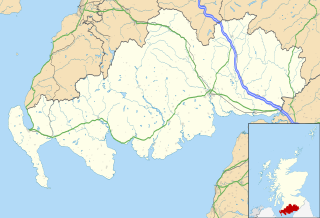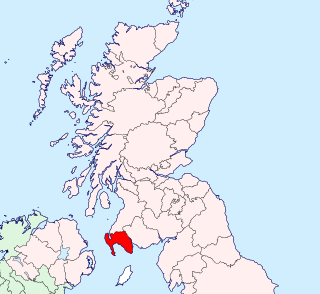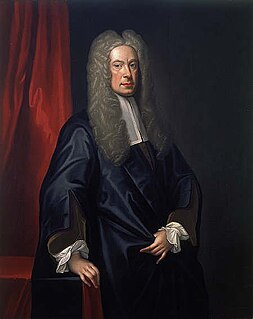Whithorn in Wigtownshire was a royal burgh that returned one commissioner to the Parliament of Scotland and to the Convention of Estates.

Whithorn ( 'WIT-horn';, royal burgh in the historical county of Wigtownshire in Dumfries and Galloway, Scotland, about 10 miles south of Wigtown. The town was the location of the first recorded Christian church in Scotland, Candida Casa : the 'White [or 'Shining'] House', built by Saint Ninian about 397.

Wigtownshire or the County of Wigtown is a historic county, registration county and lieutenancy area in south-west Scotland. It is popularly known as and referred to as The Shire. Until 1975, Wigtownshire was one of the administrative counties used for local government purposes, and is now administered as part of the council area of Dumfries and Galloway. As a lieutenancy area, Wigtownshire has its own Lord Lieutenant, currently John Alexander Ross. In the 19th century, it was also called West Galloway. The county town was historically Wigtown, with the administrative centre moving to Stranraer, the largest town, on the creation of a county council in 1890.

A royal burgh was a type of Scottish burgh which had been founded by, or subsequently granted, a royal charter. Although abolished in law in 1975, the term is still used by many former royal burghs.
Contents
After the Acts of Union 1707, Whithorn, New Galloway, Stranraer and Wigtown formed the Wigtown district of burghs, returning one member between them to the House of Commons of Great Britain.

The Acts of Union were two Acts of Parliament: the Union with Scotland Act 1706 passed by the Parliament of England, and the Union with England Act passed in 1707 by the Parliament of Scotland. They put into effect the terms of the Treaty of Union that had been agreed on 22 July 1706, following negotiation between commissioners representing the parliaments of the two countries. By the two Acts, the Kingdom of England and the Kingdom of Scotland—which at the time were separate states with separate legislatures, but with the same monarch—were, in the words of the Treaty, "United into One Kingdom by the Name of Great Britain".
New Galloway was a royal burgh that elected one Commissioner to the Parliament of Scotland before 1707.
Stranraer in Wigtownshire was a royal burgh that returned one commissioner to the Parliament of Scotland and to the Convention of Estates.

